Last year I had the opportunity to visit the Museum of Longines. It is actually free of charge, but can only be visited as a part of a guided tour, hence you have to book it via the website.
Although I strongly recommend that you do this whenever you are in Switzerland for watches you can alternatively sit back and read my story and look a the pictures here 😉
The museum is indeed for free, but in my humble opinion it is absolutely professional and modern in terms of museum didactics and exhibits.
My short report here, therefore, is by no means able to give you a complete overview, so I rather concentrate on a few subjective highlights.
Longines is located in Saint-Imier, just a stone’s throw from La Chaux-de-Fonds and about 30 minutes (by car – or train, we are in Switzerland!) from Biel/Bienne.
Longines was actually founded in Saint-Imier in 1832 and later moved within the town to a place called Les Longinges („the longish meadows“) in 1867 – and still is there today!
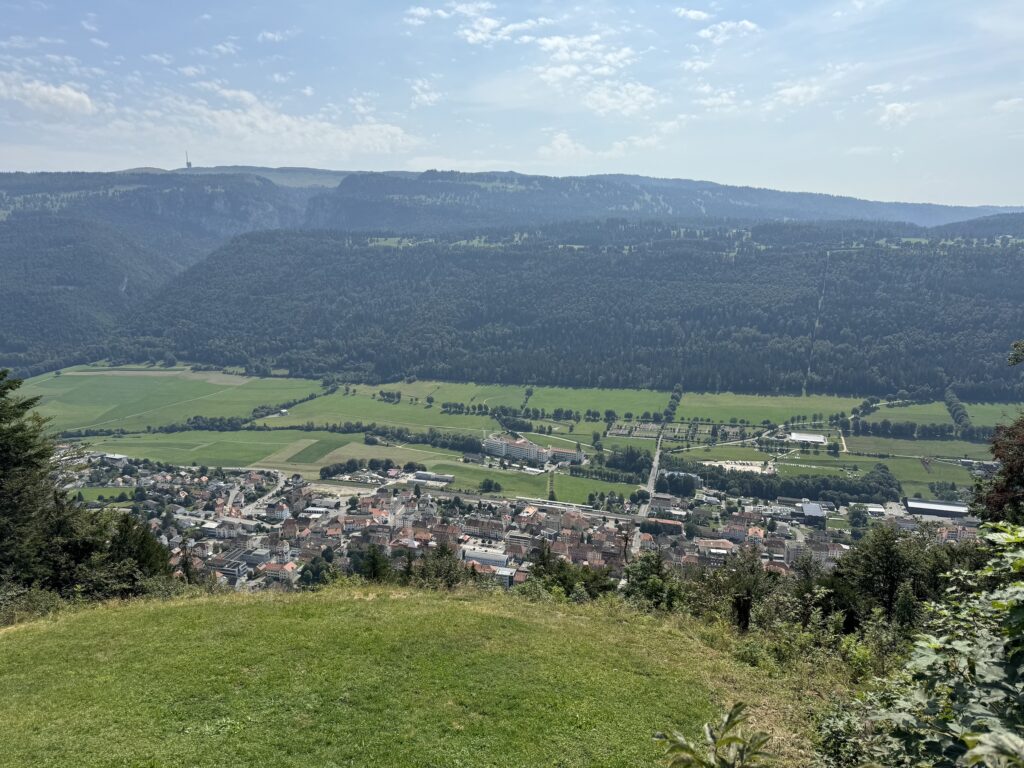
The Longines factory seen from the Mont Soleil (“sunny mountain”) which can be effortlessly reached via a cog railway. If you plan to go up there, don’t miss the opportunity to pay a (pre-announced and agreed, of course) visit to Zeitwinkel, who are located just a few steps from the base station.
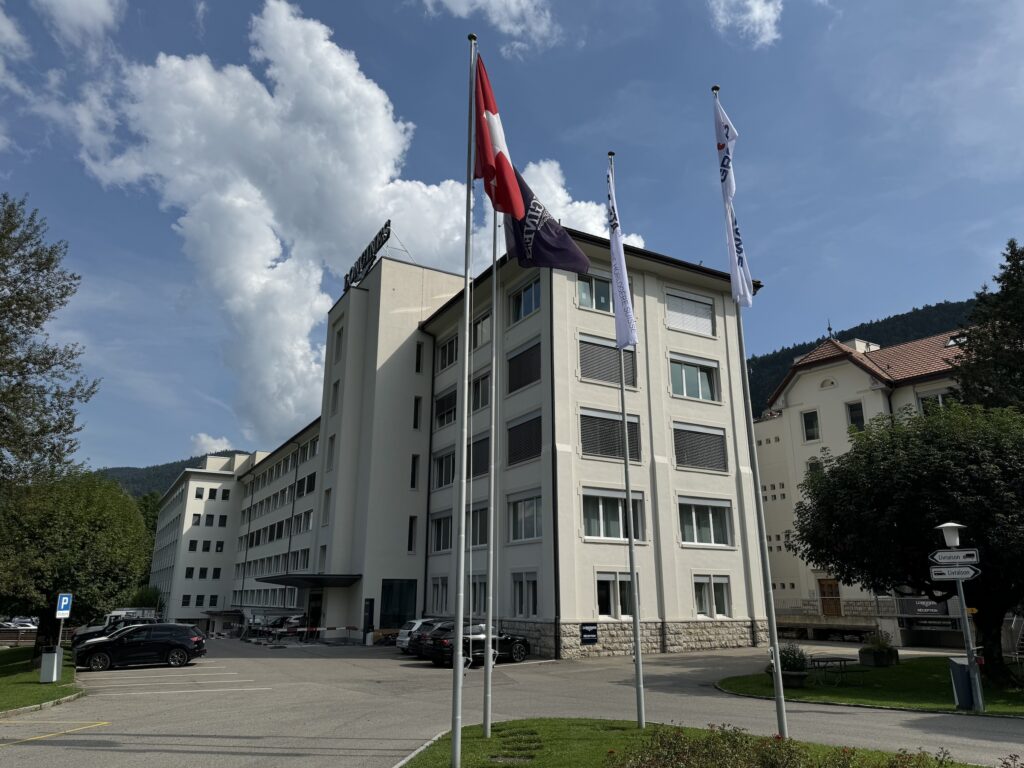
As you can see, the factory is rather large and consist of several buildings; the museum is located in the main building.
The tour starts with the already very impressive
archive room,
in which you find the original books reaching back until 1867. Longines has digitised these today and can therefore offer every owner of a Longines watch an extract from the archives!
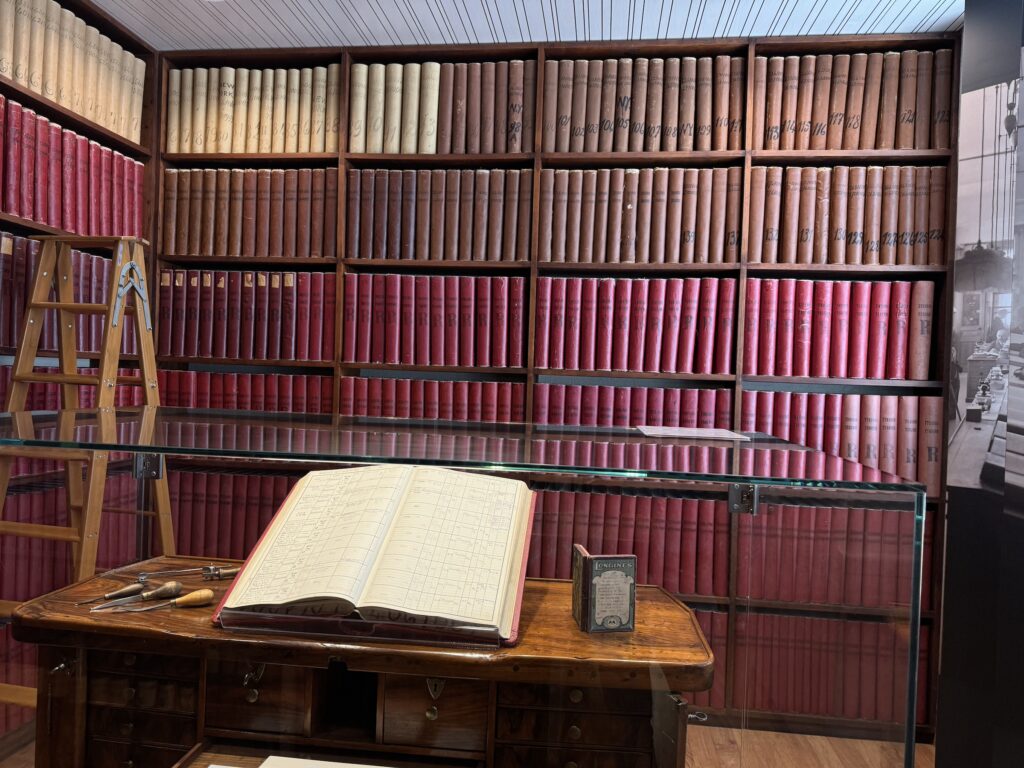
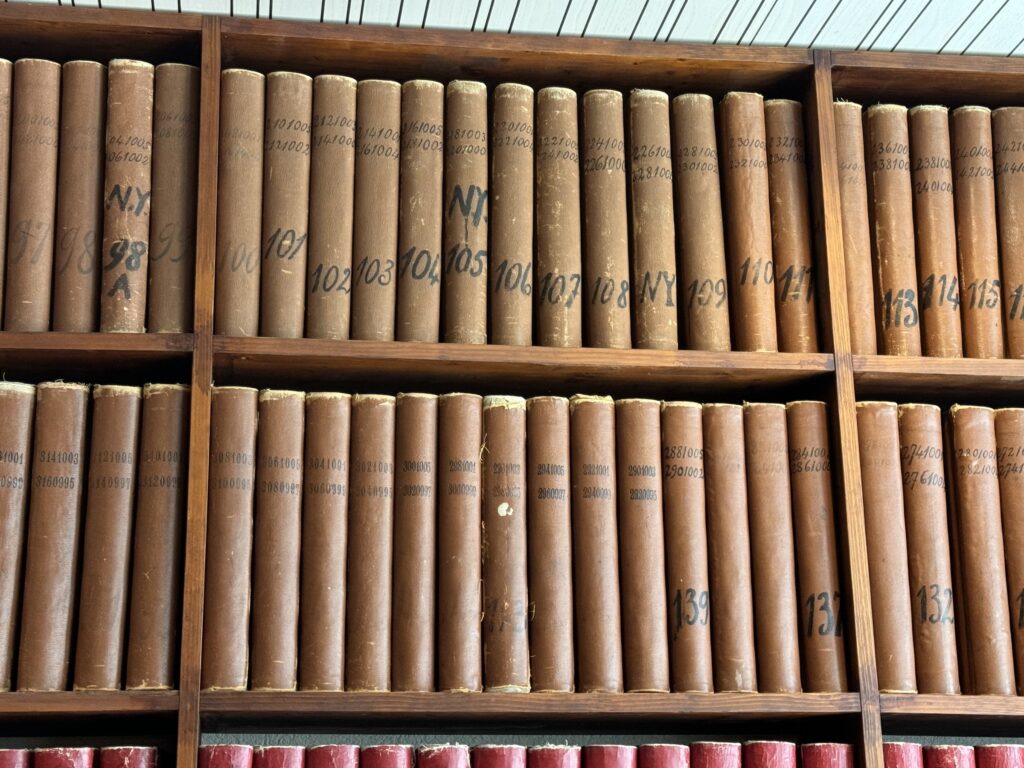
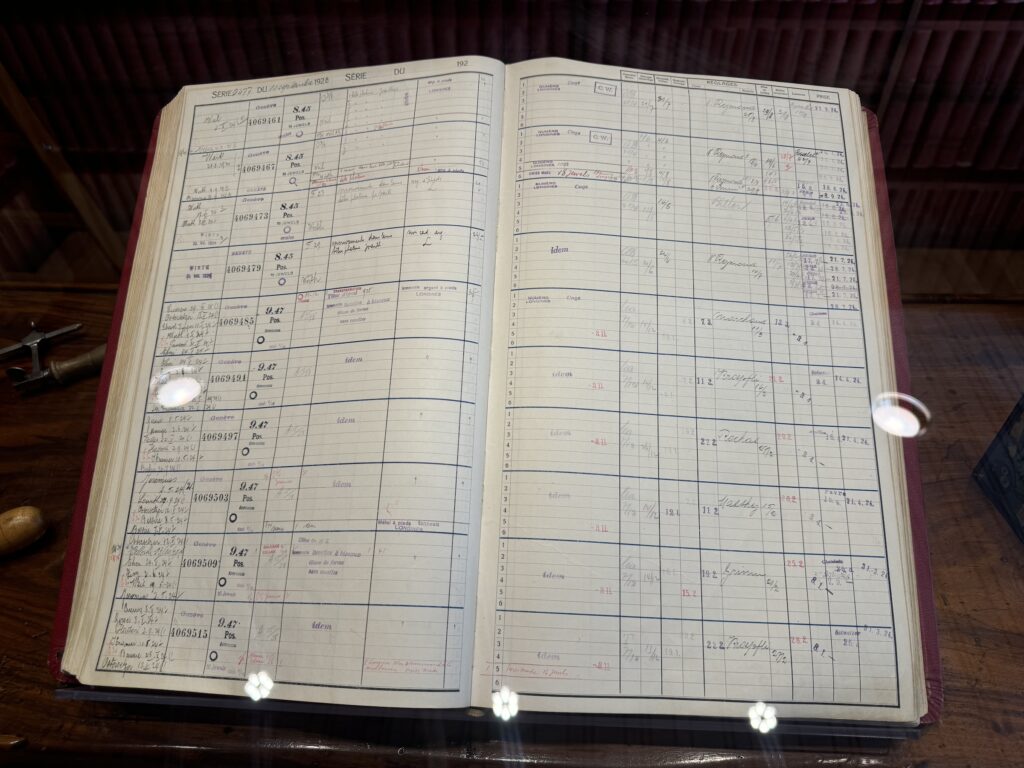
The
first main room
contains many of the manifold milestones of Longines as well as a timeline of the history – you can see also watches below the posters, so you already get an impression of the historic content of many of their watches.
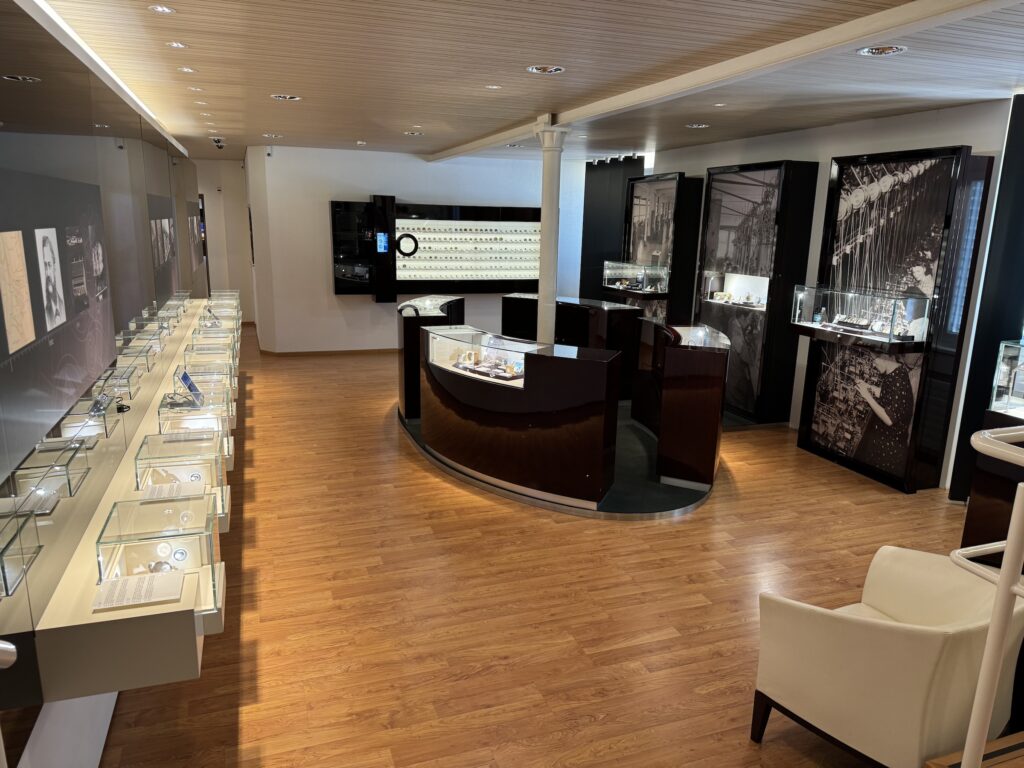
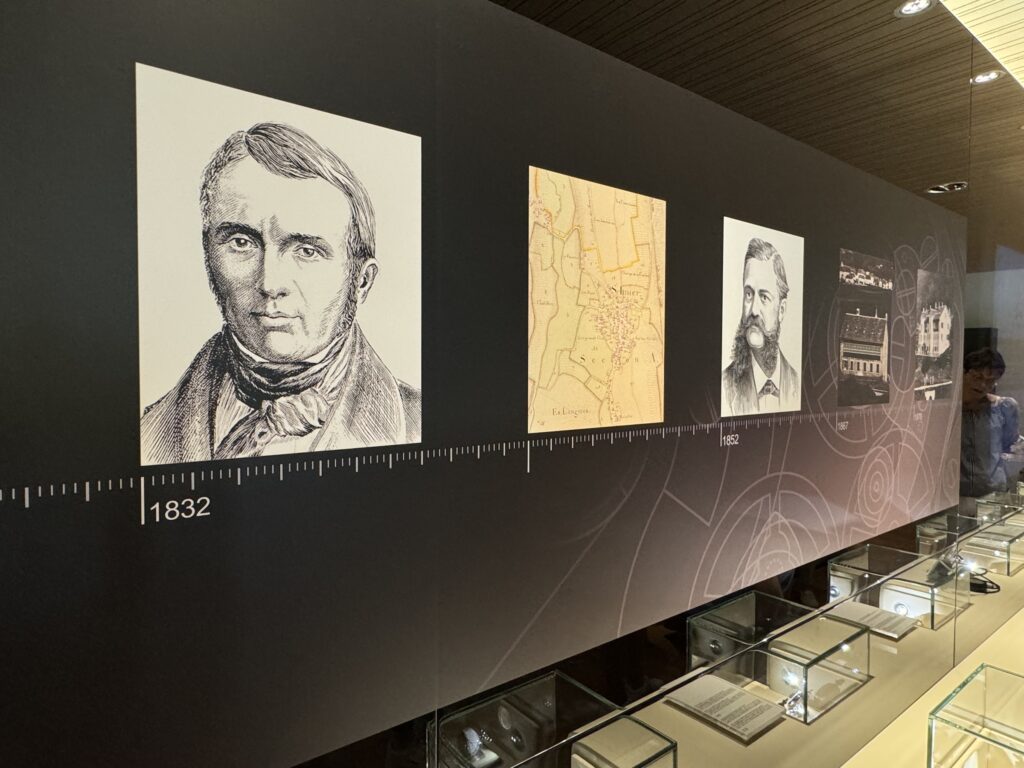
For me, however, the star of this room is the large
movement display.
Dozens of (we would today call them “manufacture”) movements of the long history of the brand. A movable magnifying glass allows each movement to be viewed individually in more detail. And – even better – the screen to the left automatically gives you additional information about the selected movement.
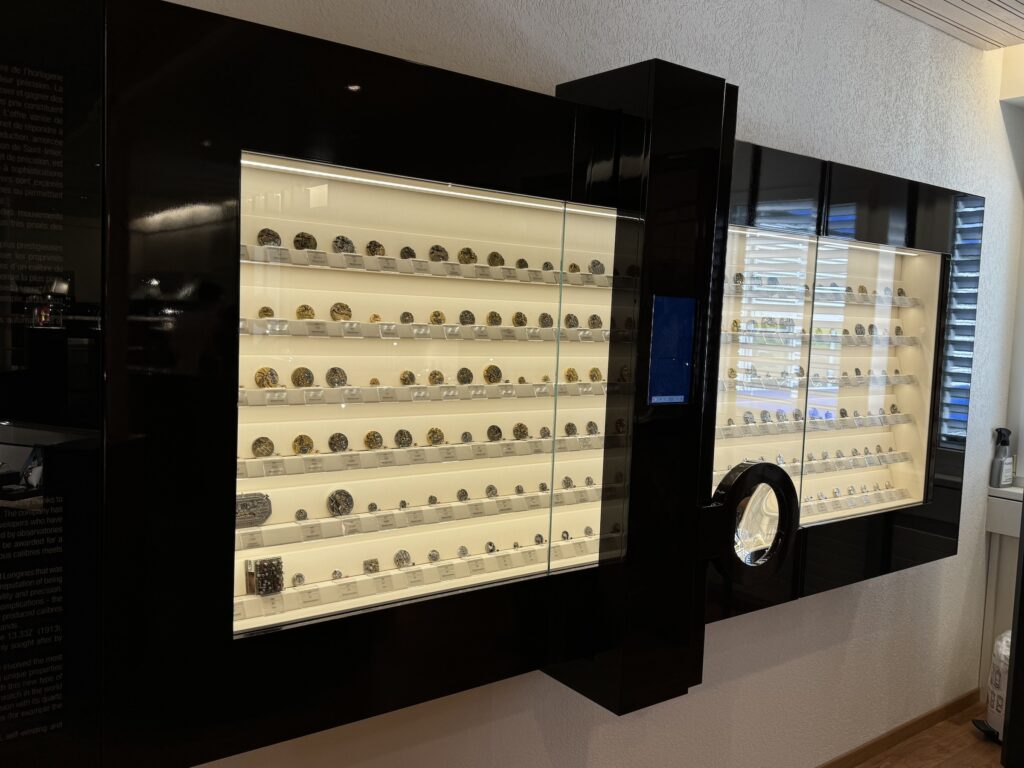
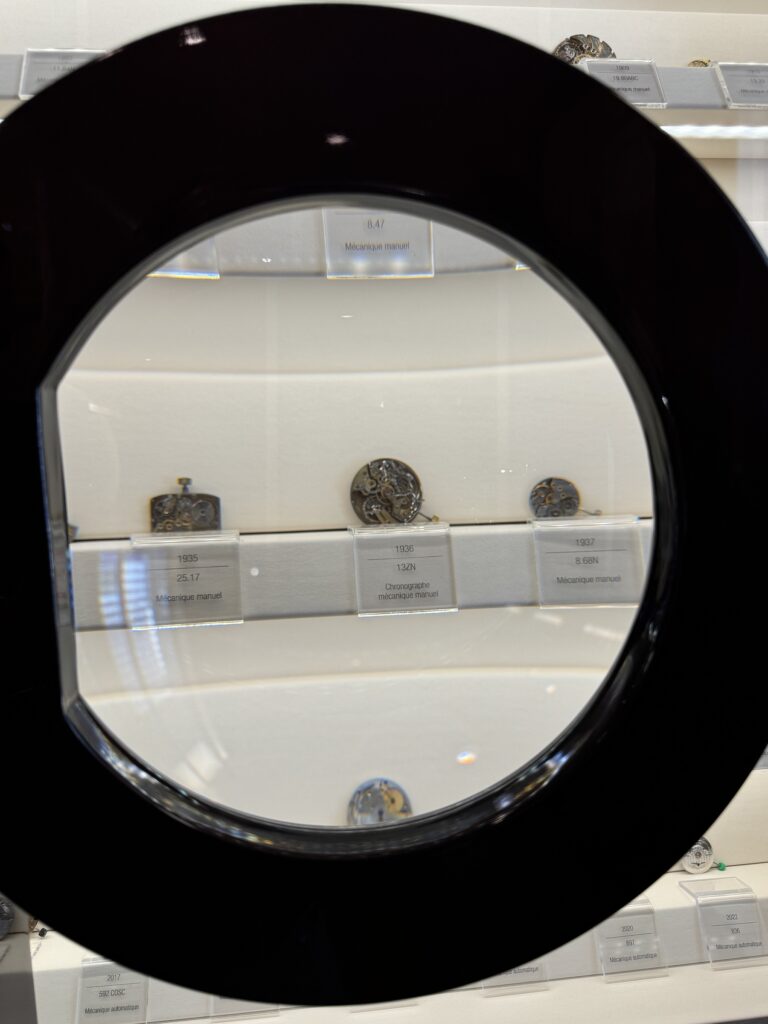
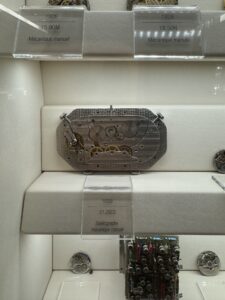
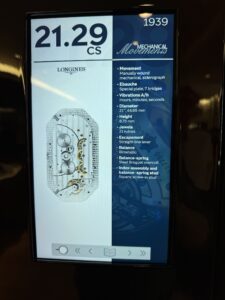
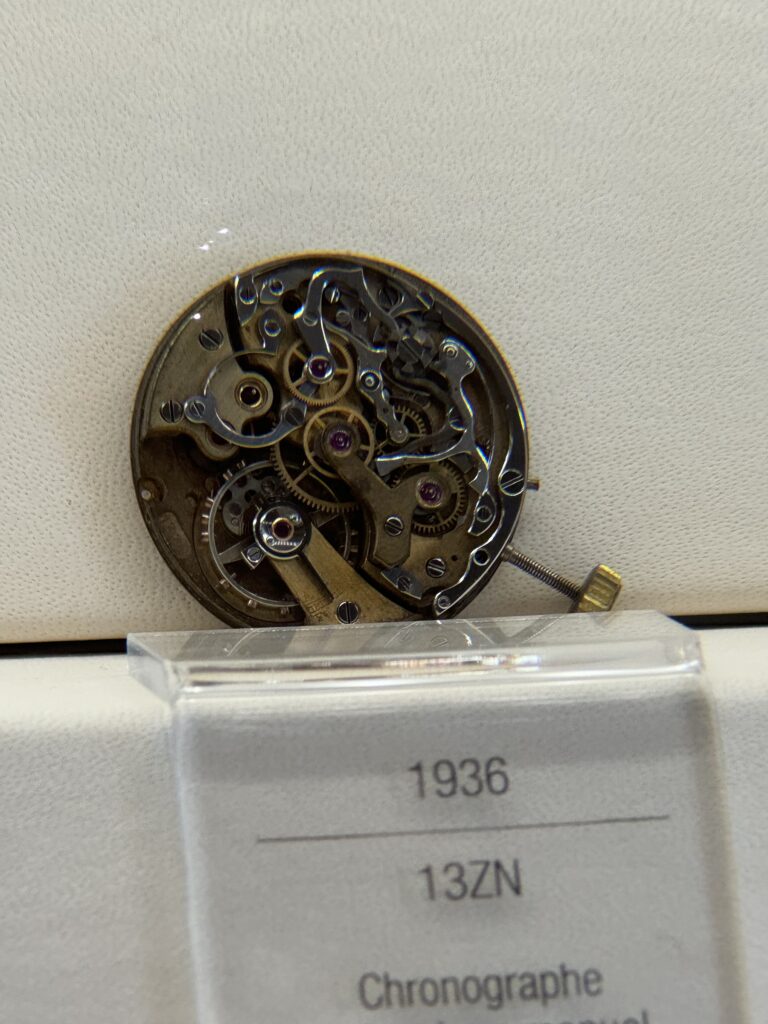
You could easily spend hours here alone …
Wo says,
female pilots,
women with large watches and wearing watches over the cuff are a thing of modern times?
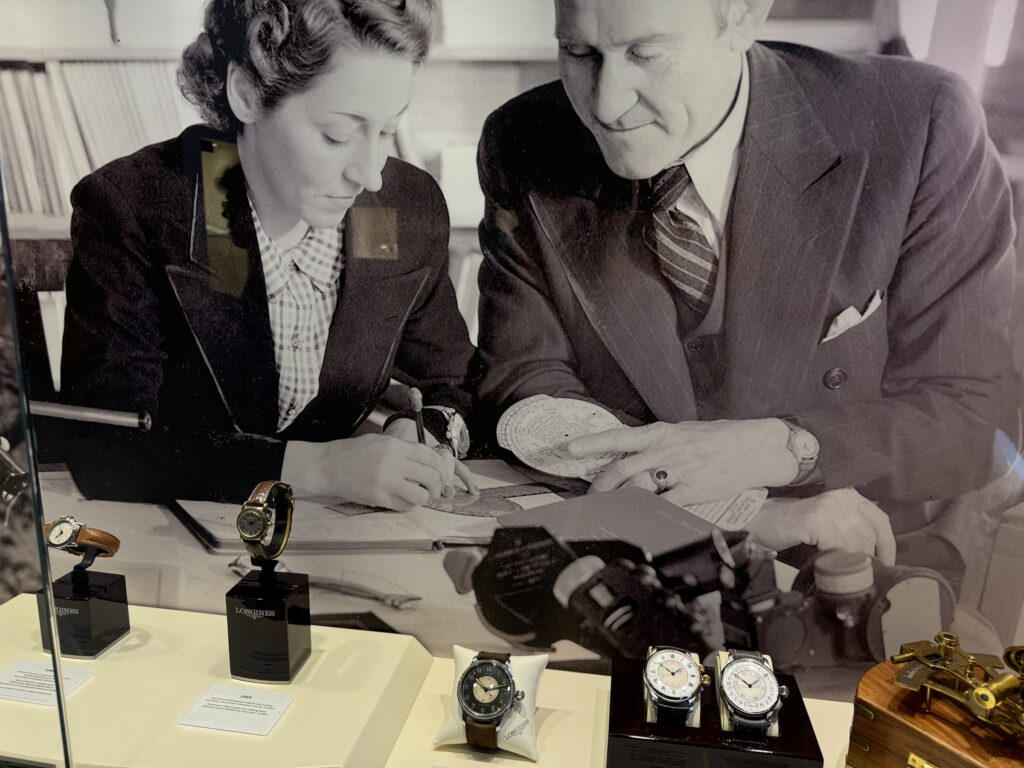
Elinor Smith, record breaking pilot of the last century, plays a mayor role in this section of the museum, I found her much more impressive than the model of the «Spirit of St. Louis» – expansive exhibit of the next room.
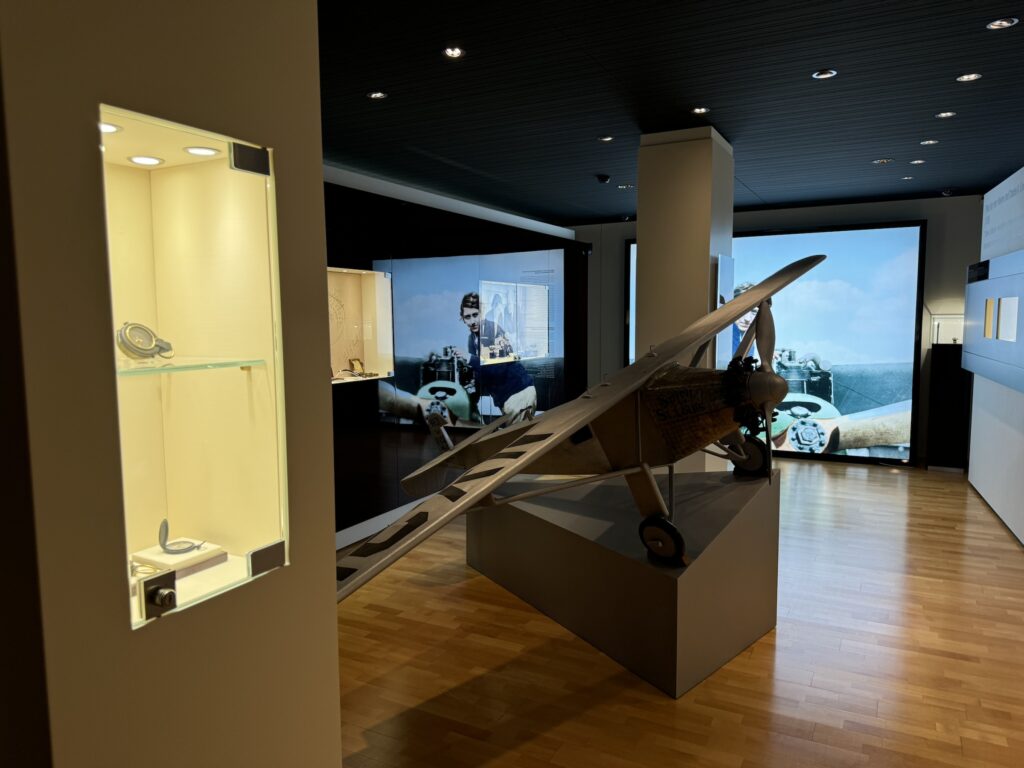
Main watch exhibits
in the museum are to me the «Hour-Angle Watch» and the «Siderograph». While the first is quite well known (and still in the catalogue of Longines) as Charles Lindberg was involved in it’s development and he used it to determine the longitude during his flights, the Siderograph determines the hour angle of the sun or of another star in relation to the Greenwich meridian and completely omitted the representation of the “civil” time. It also features a manual wound movement with a rattrapante hand.
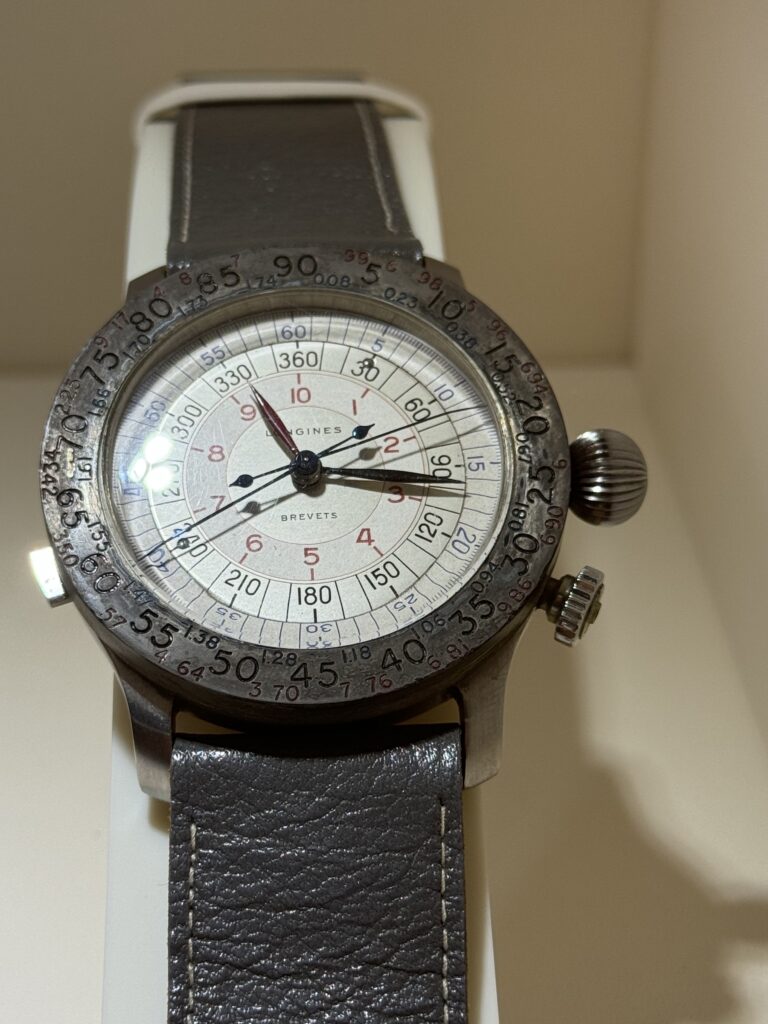
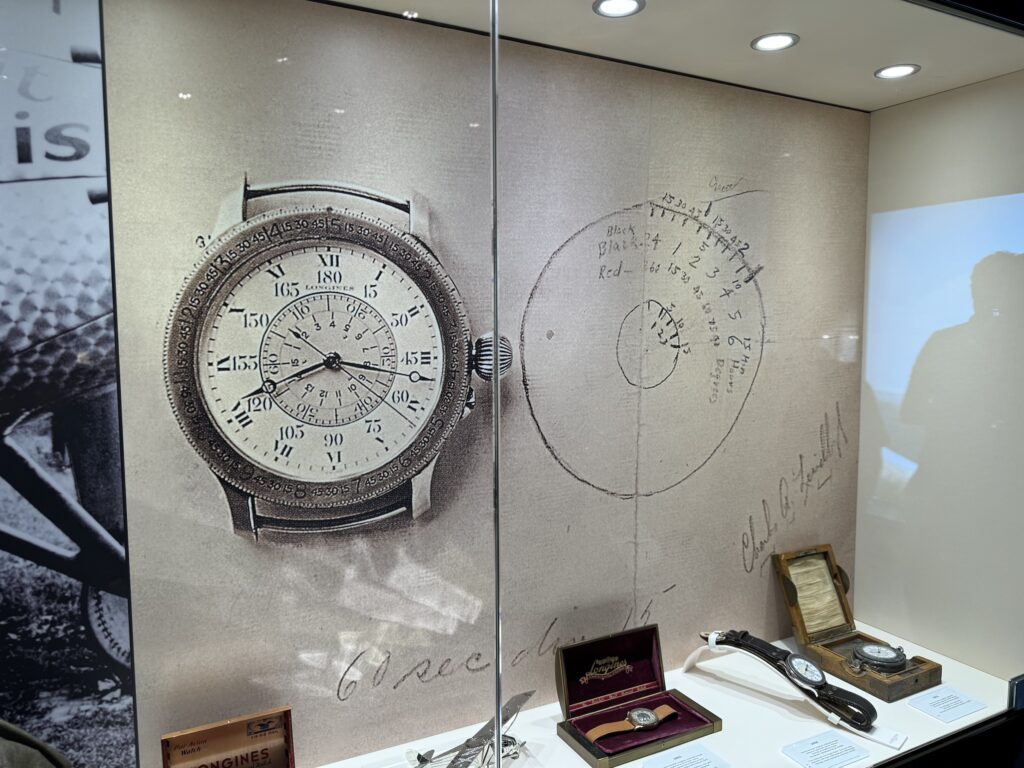
Another, comparatively simple, pilots watch of the 1930s is in the current portfolio of Longines again: the Czechoslovak air force at the time used Longines wristwatches with a rotating bezel, which moves a start indicator under the crystal. This watch called Pilot Majetek is also a further example which shows that cushion cases were en vogue in the 30s!
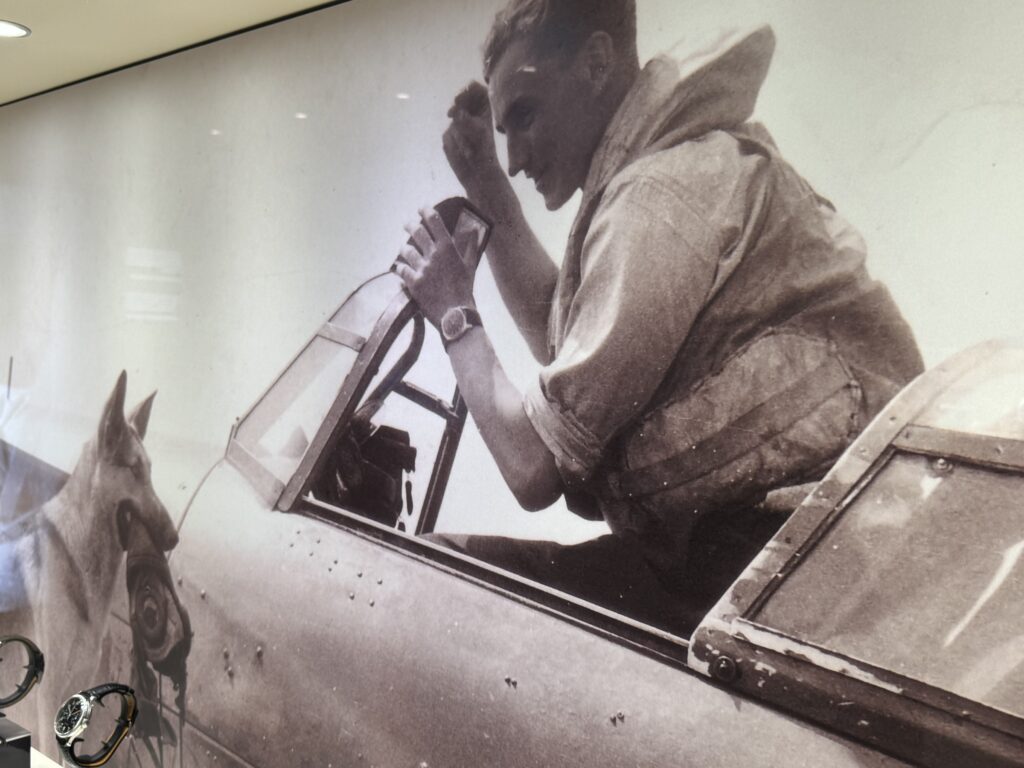
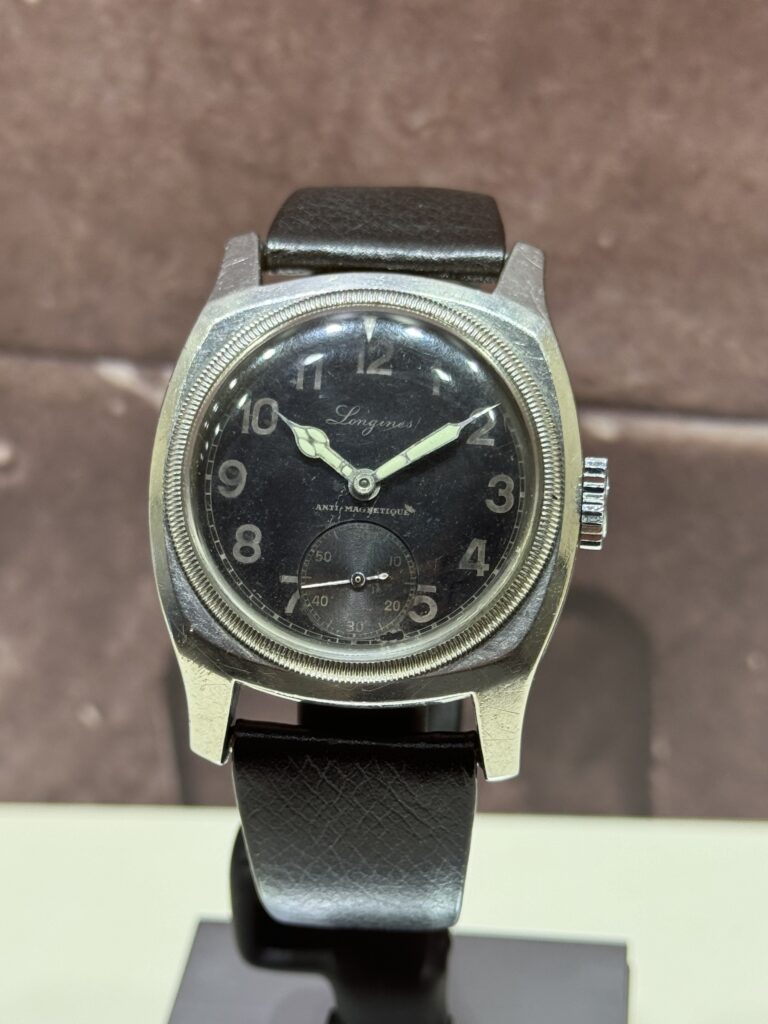
Which one do you prefer, the original or the new version?
If you’re into pilot watches, you can spend hours in this museum for this subject alone. This here is a watch for an airplane (or car) with an 8-day power reserve and a speed calculator providing the speed in km/h for a determined route. The outer graduation is mobile with the rotating bezel and corresponds to the time; the inner graduation corresponds to the distance.
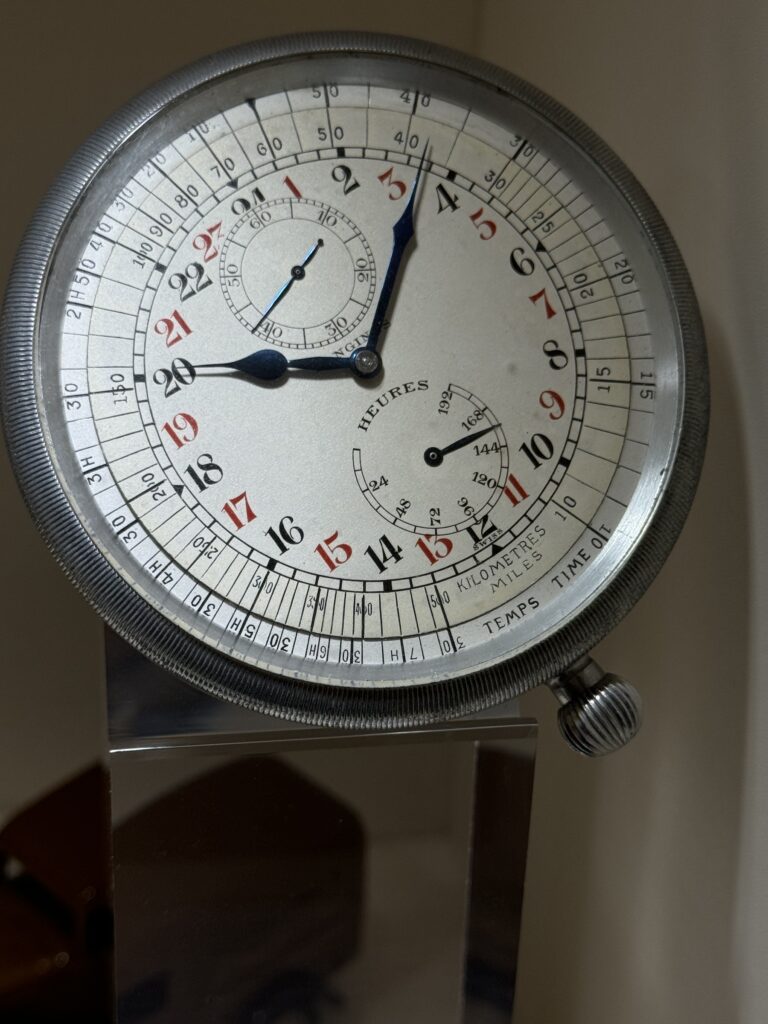
Another kind of theme for Longines are chronographs.
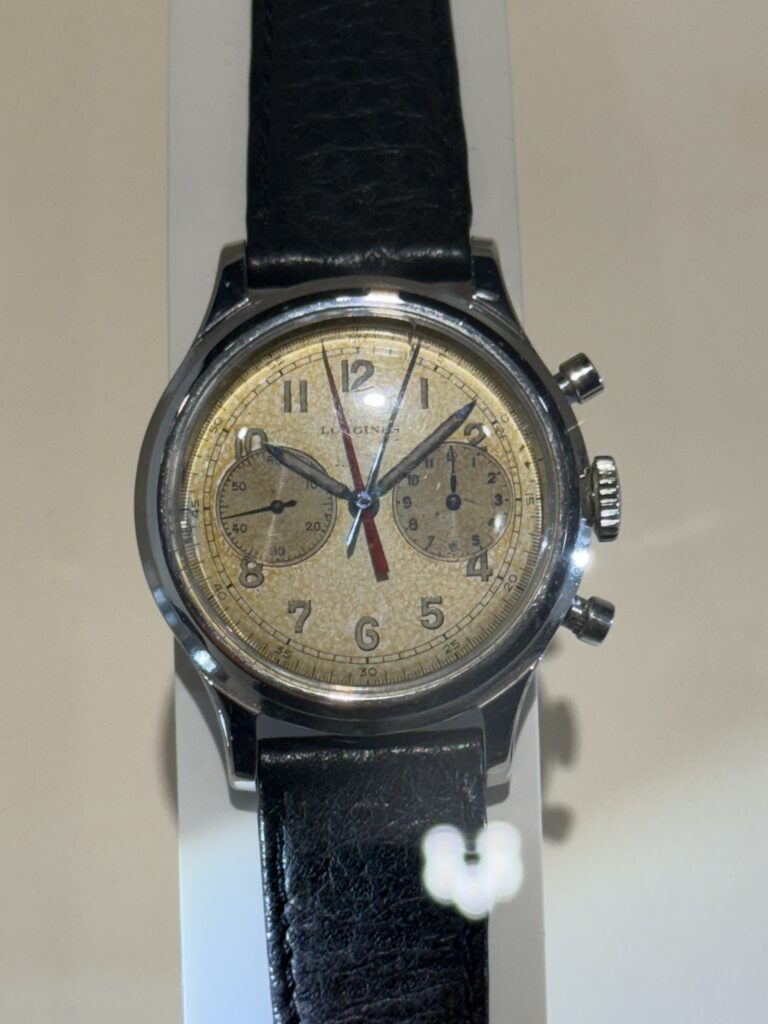
The production of the famous Longines caliber 13ZN began in 1936. After the 13.33Z, it was the second in-house movement intended to fit a wrist-chronograph. Icon, legend, or masterpiece, this Longines movement is today considered by specialists as one of the best chronographs of all time. Its popularity has rocketed at auction.
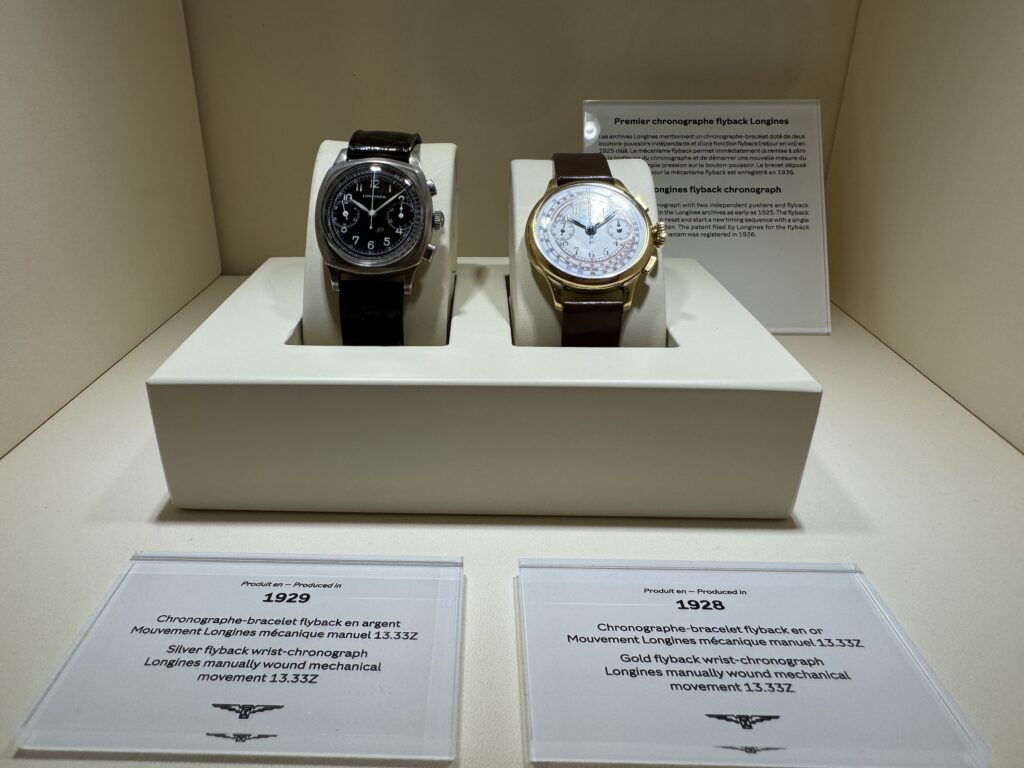
I don’t know if this was the first, but can you imagine, that as early as 1916 there was a handheld chronograph measuring 1/100th of a second?
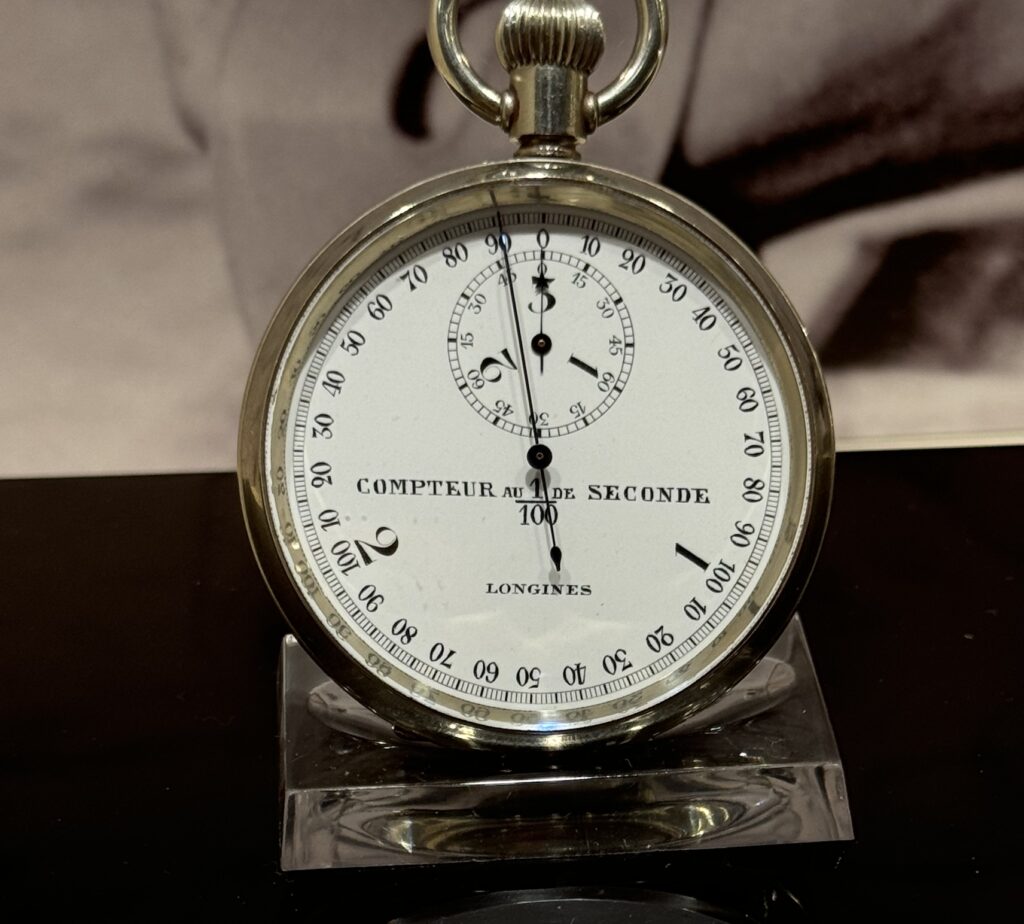
While again I can’t tell if this is the first of it’s kind, it shows, that in watchmaking anything has been done before … here a moving bezel under the crystal with an extra crown to move it – dated 1935:
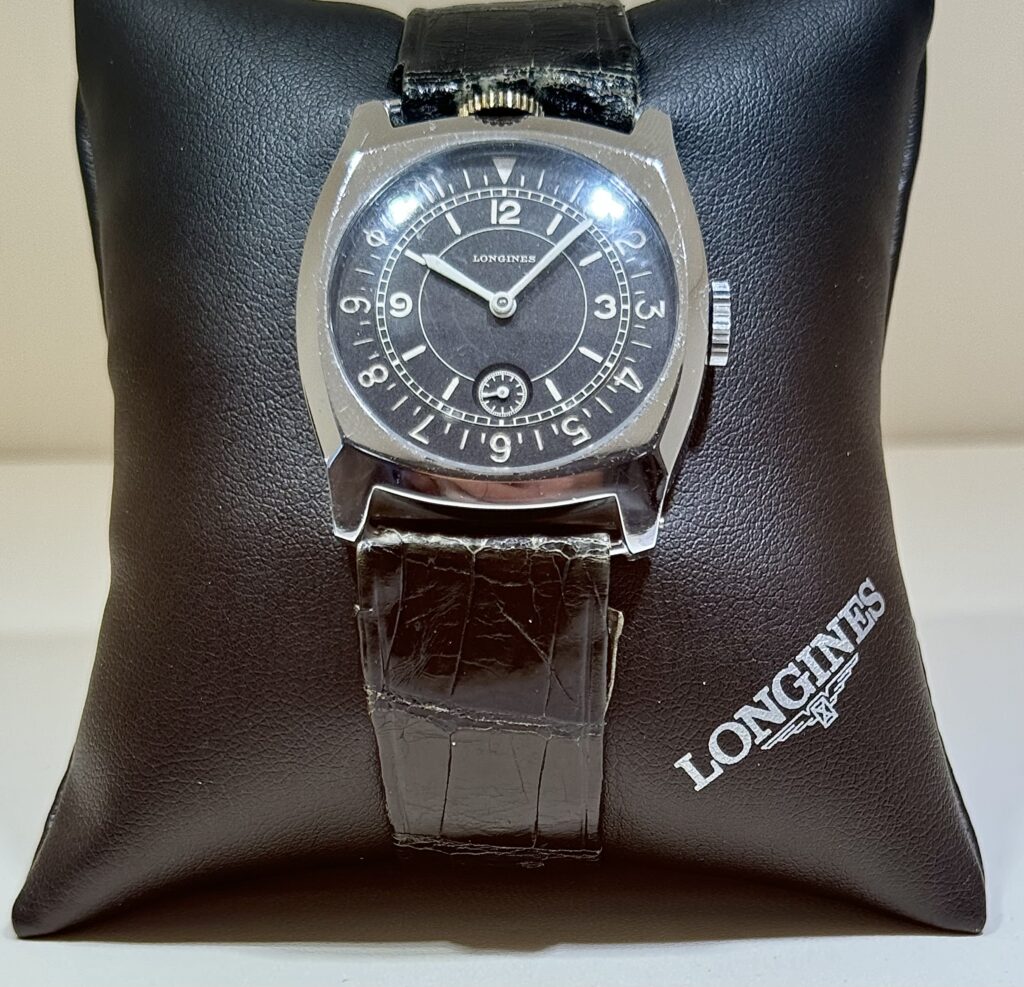
This beast here, however, was the thinnest (quartz) watch at the time (1980):
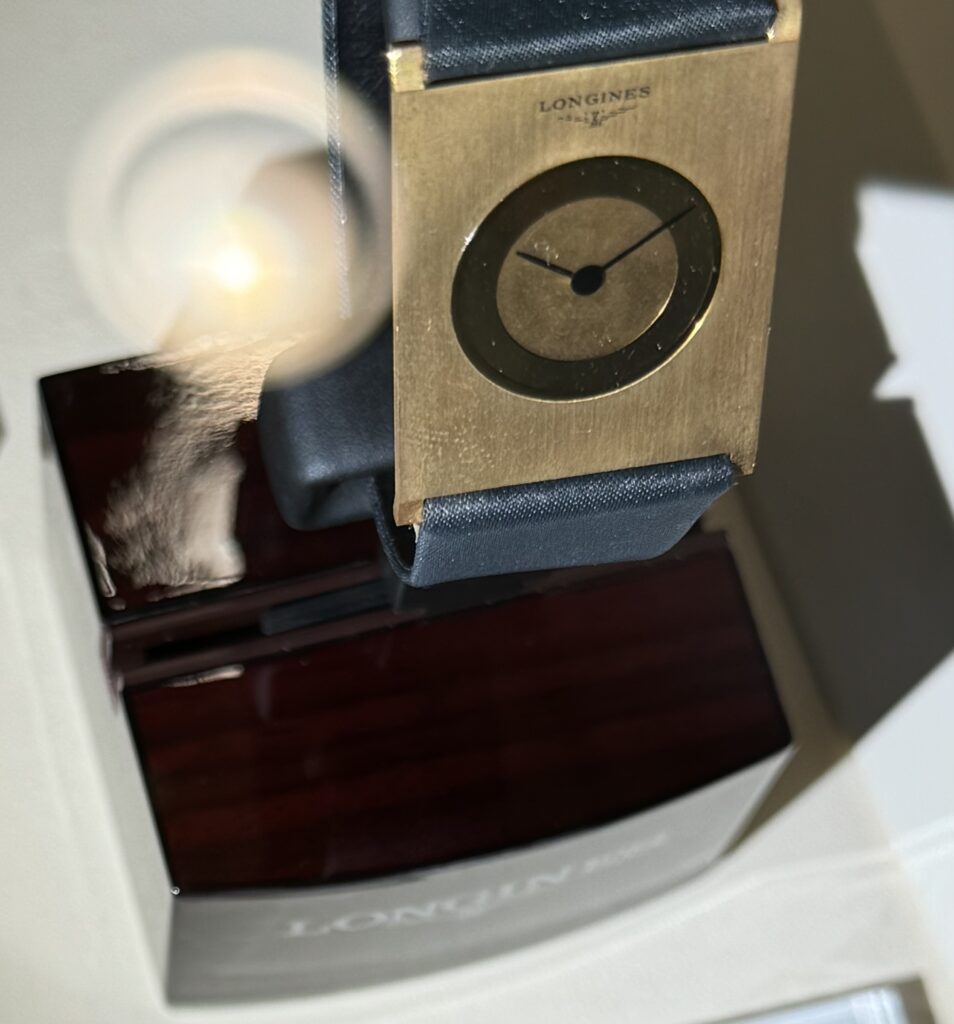
… and this the most exact movement (1959) built for observatory competitions, working at 32.000 vibrations/hour:
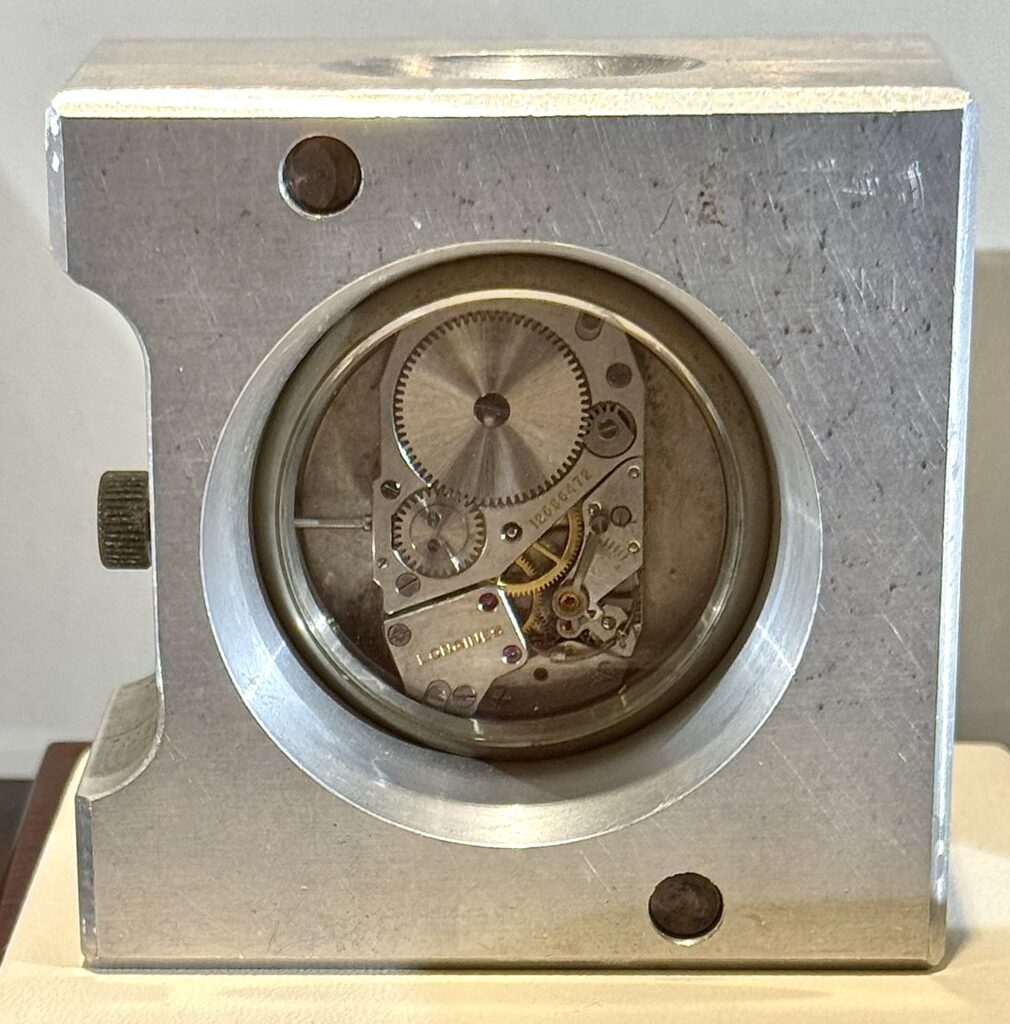
As “promised”, this report is quite subjective. As an electronics engineer, I can’t spare you the legacy of Longines in the field of
sports measurement.
(Alternatively this article is ending for you here, just jump below to see the «thank you»-section.)
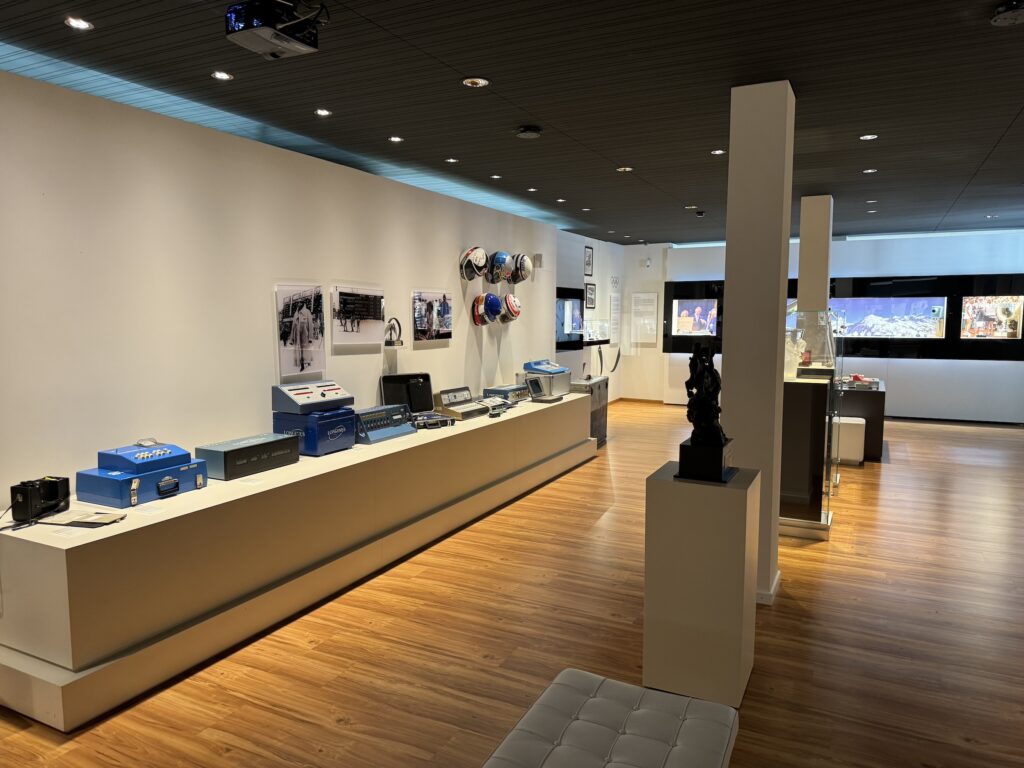
Sports measurements take up quite a large part of the exhibition
They even have small models of ancient measurement setups:
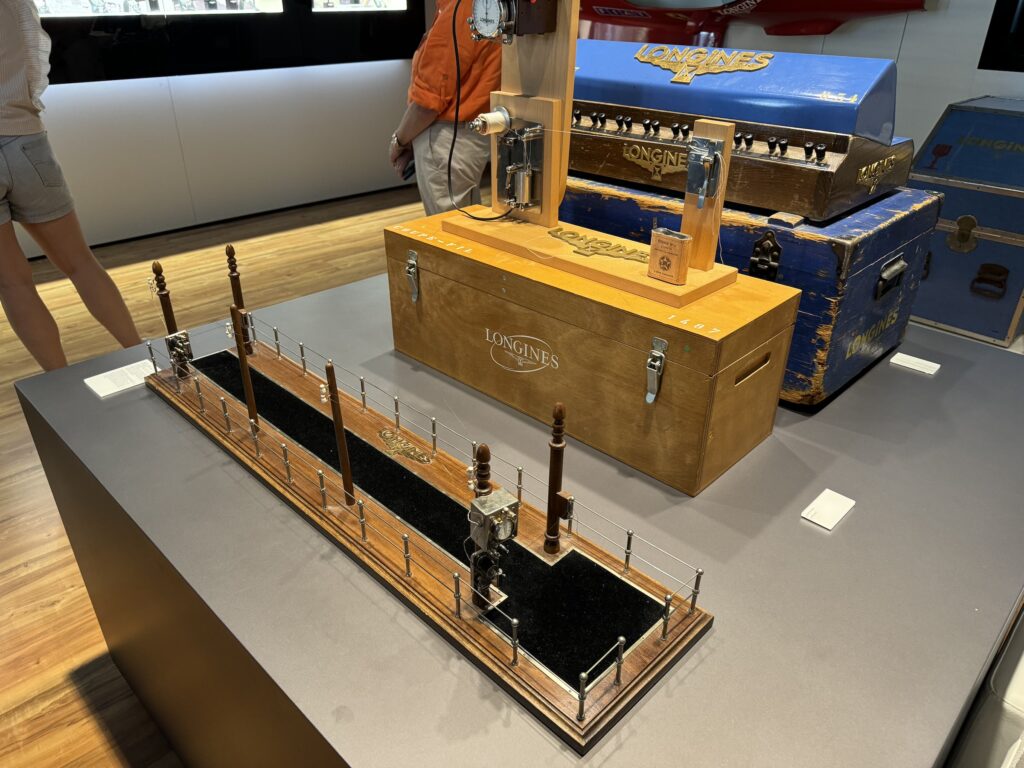
Please note that the design is electronic, but …
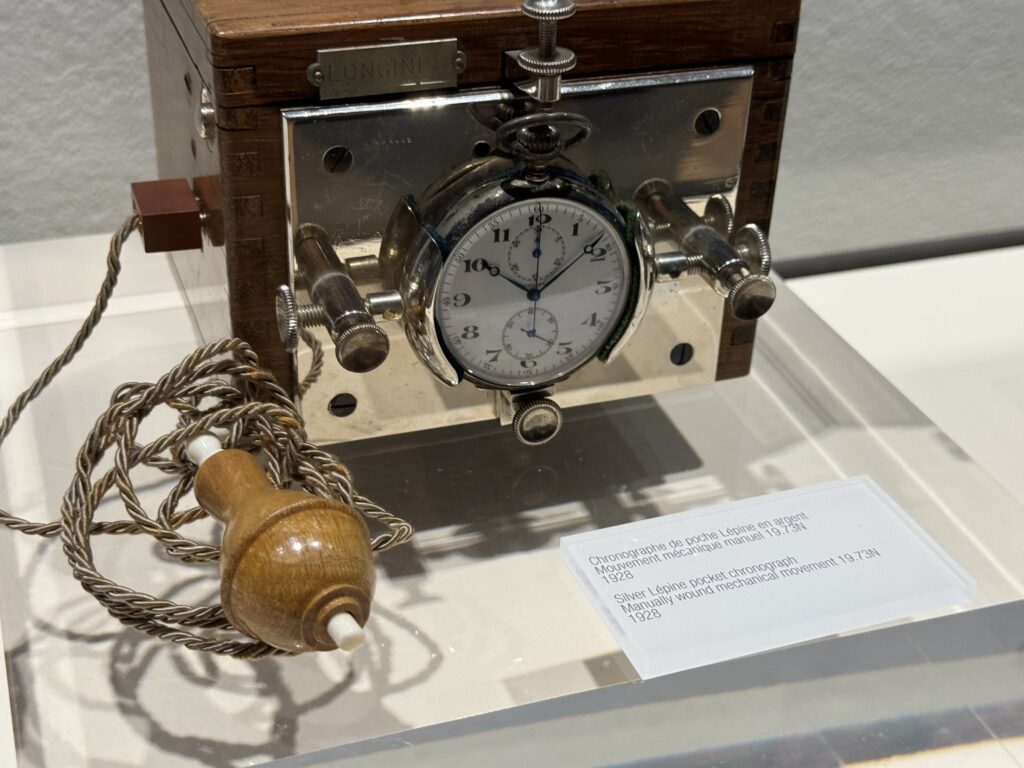
… uses a mechanical watch as part of the system!
So while at the time electronics were already used for detection, the time measurement still was mechanical. Impressive.
Later this stuff of course got more and more electronic as this technology is smaller, cheaper, more exact, more reliable, easier to use and document, etc.
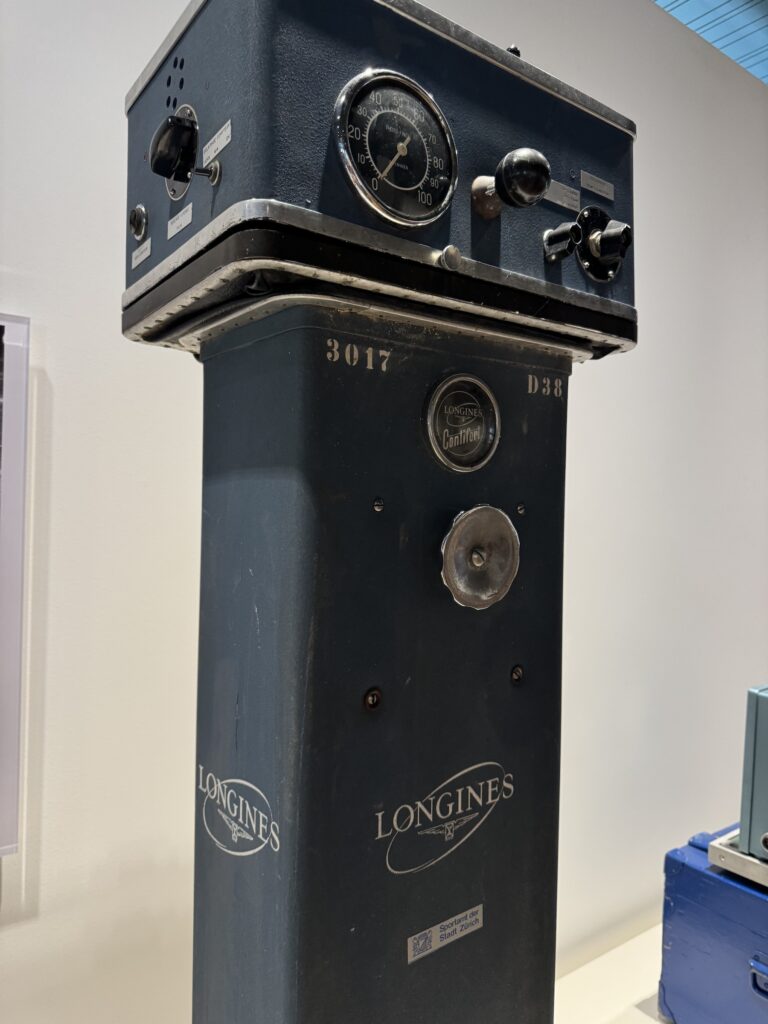
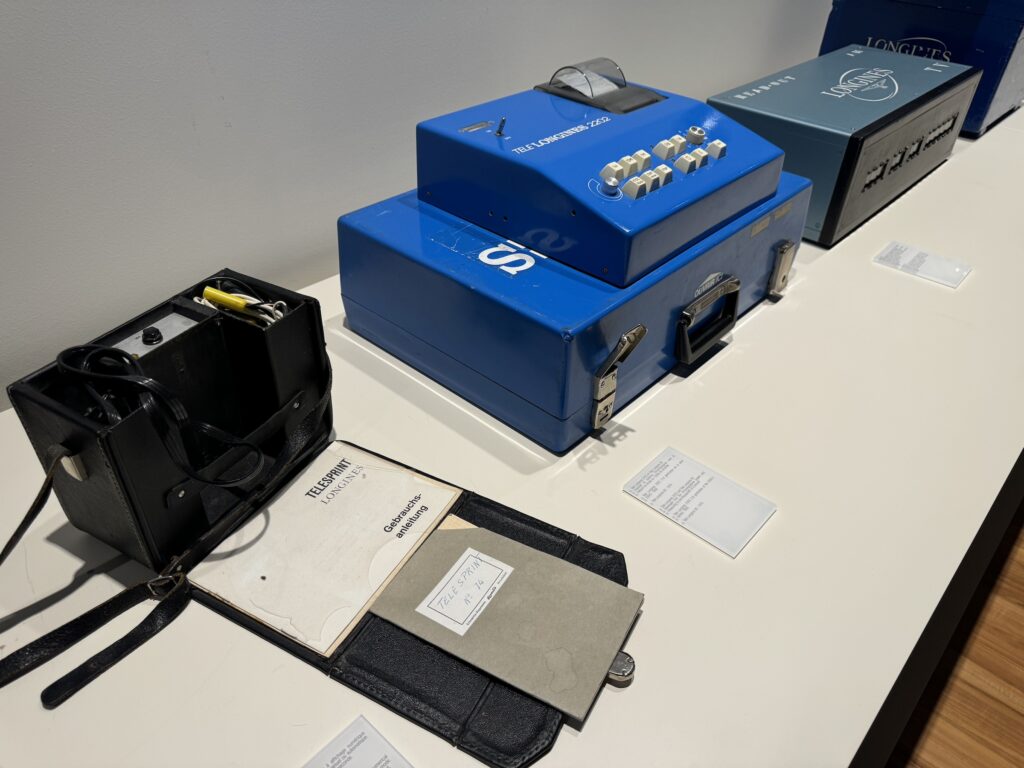
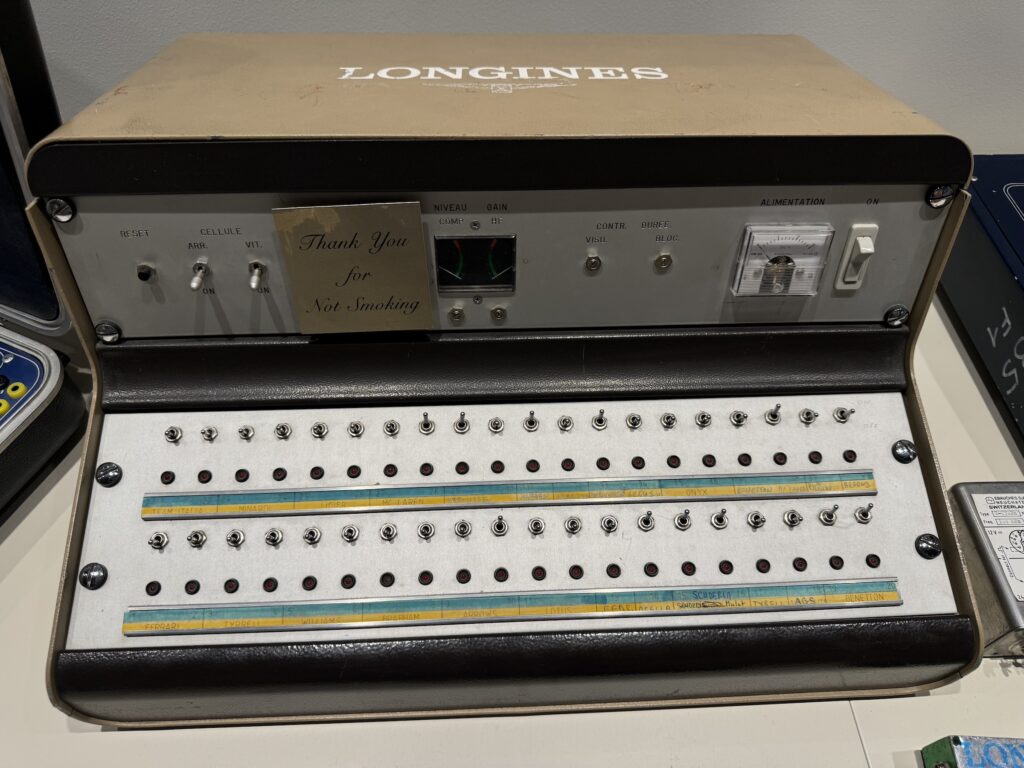
While most of you will look at the names of famous racing teams, it warms my heart to see this accumulation of «Knitter-Switches« 🙂
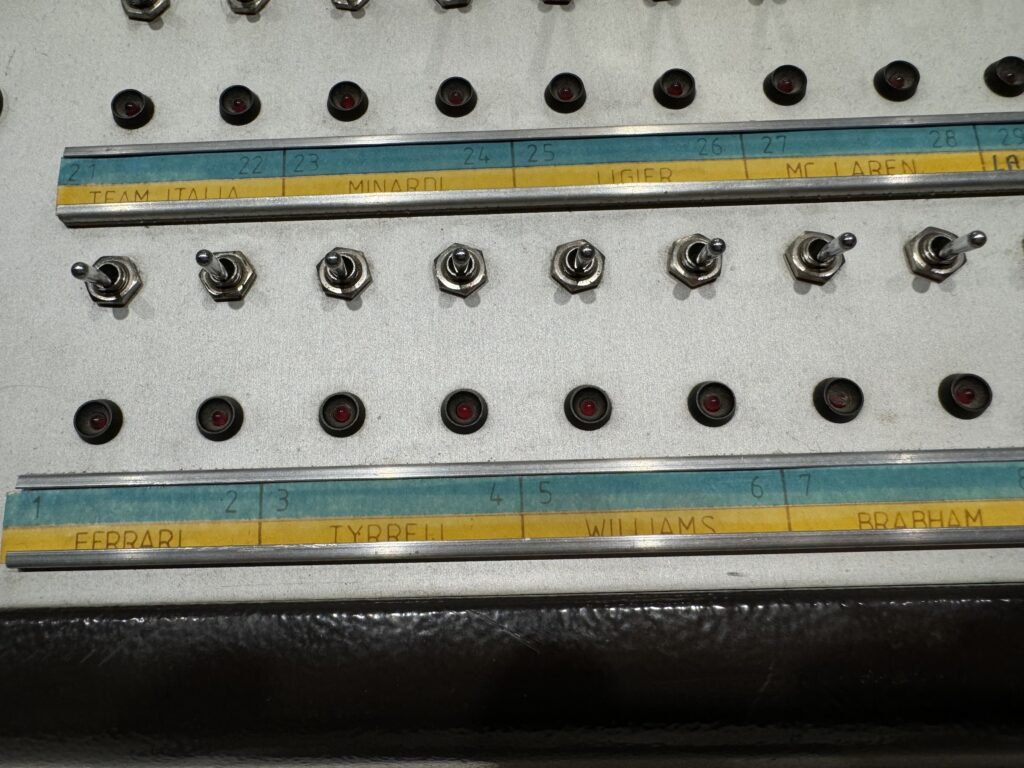
Thanks and see you soon again, Longines!
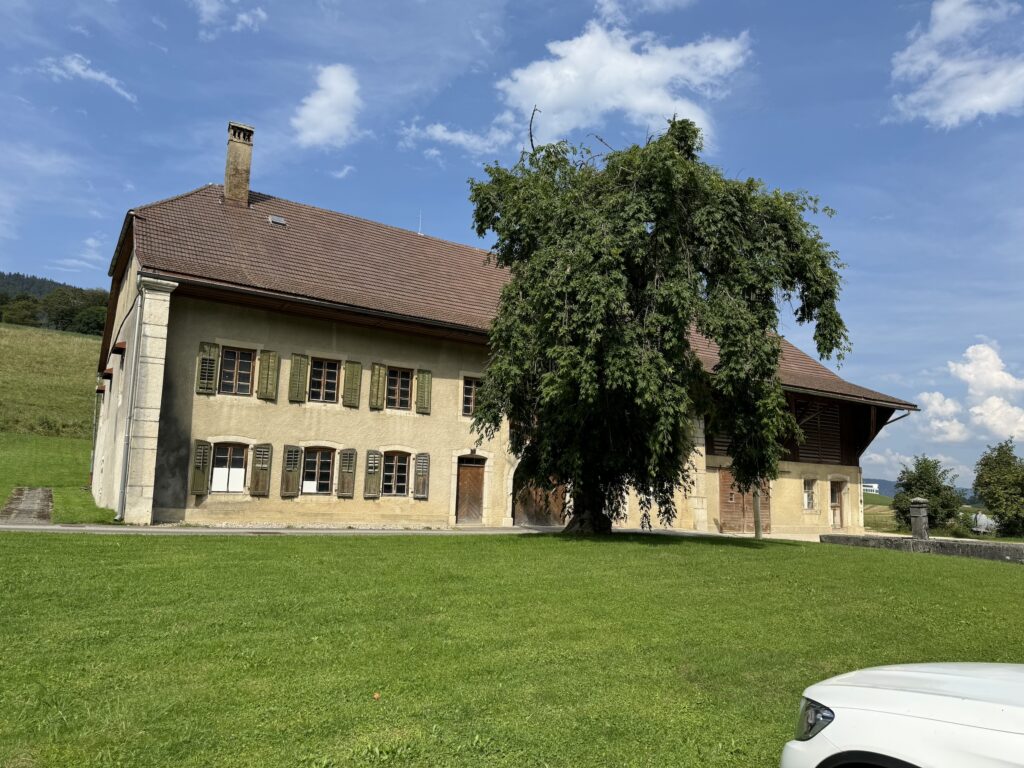
Many thanks to Daniel Hug (Head of Brand Heritage of Longines), who even took some time to welcome us and his entire superb team at the Longines Museum in Saint-Imier!
{NB: Text in purple is directly quoting the small explanatory panels of the museum.}
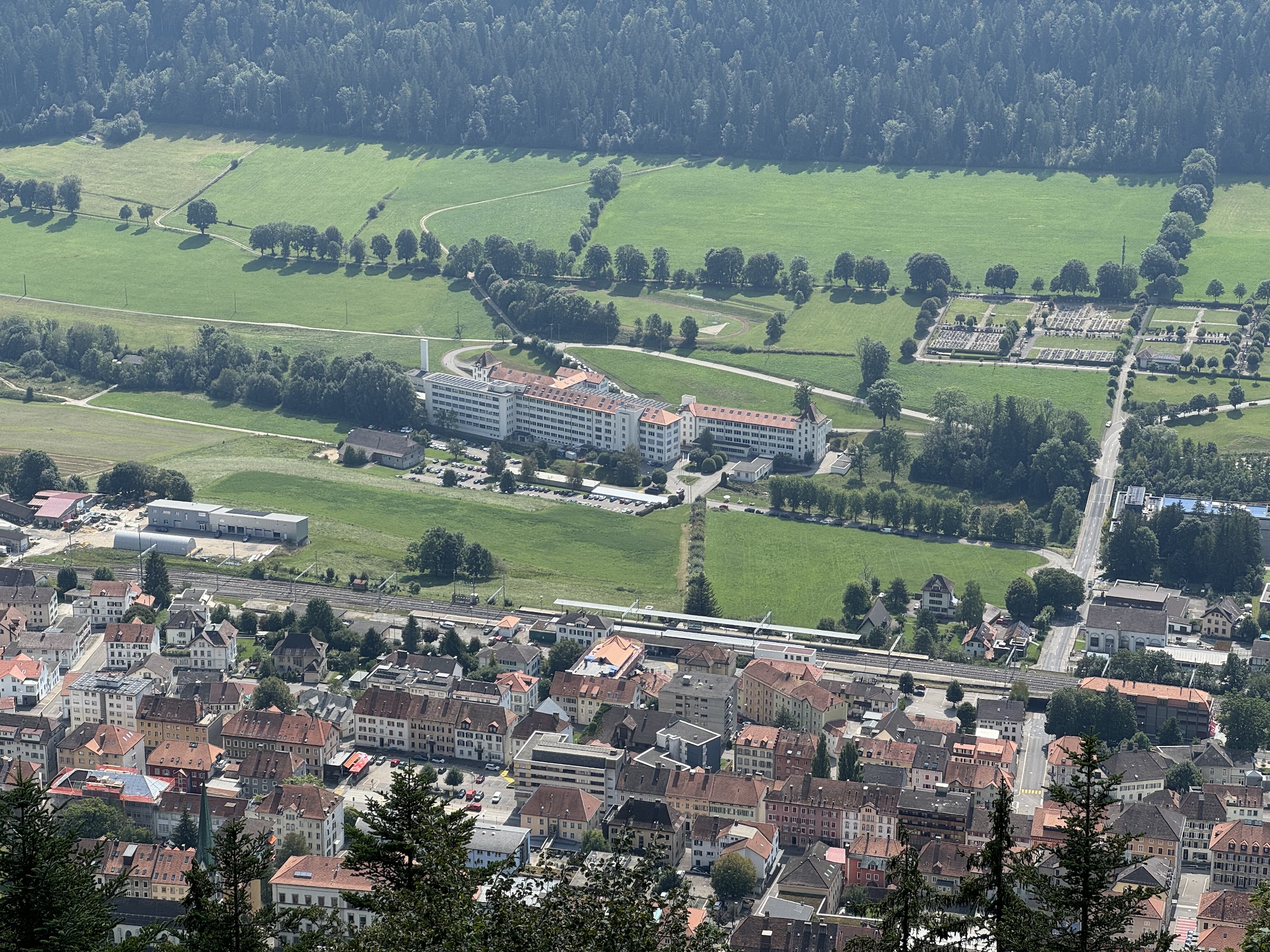
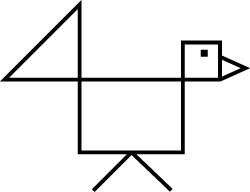
Leave a Reply
You must be logged in to post a comment.